Many Americans first encountered the phrase “the American Way” on huge billboards that by 1938 had sprouted in hundreds of U.S. cities and towns.
Shopping for groceries, heading to work, or entering an empty stretch of highway, they were suddenly confronted by a giant tableau of a cheerful American family picnicking, greeting Dad at the end of workday, or taking a Sunday drive with the family dog.
The foursome’s bright smiles, comfortable car, and trellis-adorned home indicated that they had few material or psychological worries, an impression that bold lettering on the top of each sign underscored.
“World’s Shortest Working Hours,” declared on. “World’s Highest Wages,” proclaimed another. “World’s Highest Standard of Living,” trumpeted a third. Script on the side of each billboard instructed viewers: “There’s no way like the American Way”.
The billboards, which were designed and distributed by the National Association of Manufacturers (NAM), must have seemed out of place to many Americans mired in the depth of capitalism’s worst crisis. Nevertheless, they testified to the intensity of the debate over national values unleashed by the Depression.
With the other nation turning to communism and fascism for solutions to the global economic collapse, with America’s capitalist idols knocked off their pedals, Americans, too, began examining their political options.
In this charged atmosphere, New Dealers, industrial unionists, conservative businessmen, and their various allies all seized on the language of Americanism and sought to define the nation in ways that furthered their own political and social agendas.

Near Kingwood, West Virginia. 1937.
Using new technologies and public relations techniques, they offered their own version of America’s history and core values and tried to set the limits and possibilities of U.S. political culture.
NAM was reacting to the liberal leanings of Roosevelt and his New Deal, echoing conservative calls that competition, not government intervention, was the clearest way out of the Depression economy.
The billboards, designed by the Campbell-Ewald Company, numbered 45,000 nationwide and were placed in every city with a population of over 2,500, reaching an estimated 65 million Americans daily.
Those Americans included photographers for the Farm Security Administration, who’d been dispatched to chronicle the struggles of the poor and government programs to aid them.
Margaret Bourke-White, Dorothea Lange, John Vachon, Arthur Rothstein, Edwin Locke, and other photographers captured the striking contrast of “There’s no way like the American Way” billboards and wandering migrants, destitute families, and gloomy landscapes.
In a way, these advertisements provide an authentic depiction and a critical repurposing of capitalist corporate imagery at the same time.
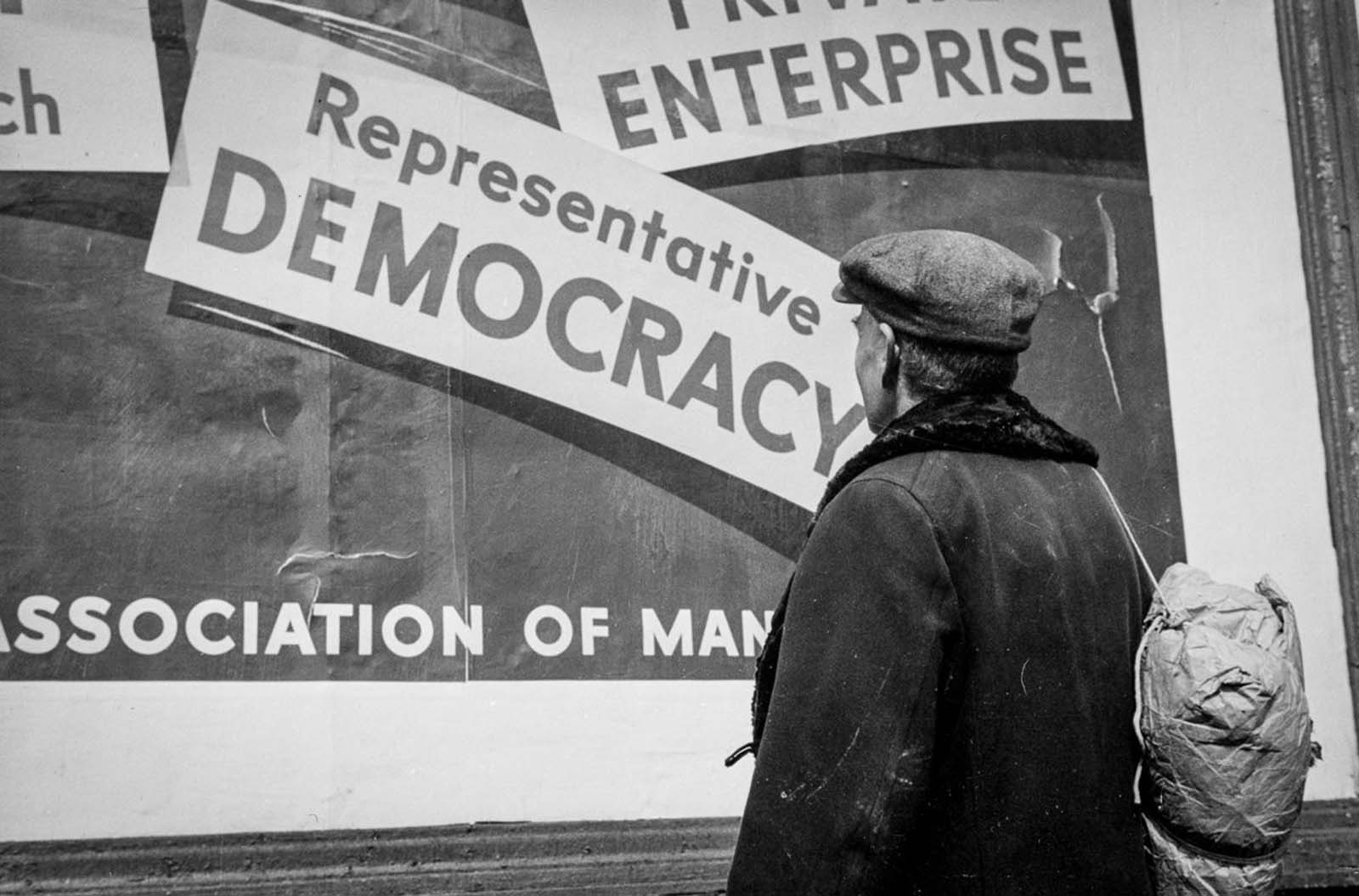
Dubuque, Iowa. 1940.
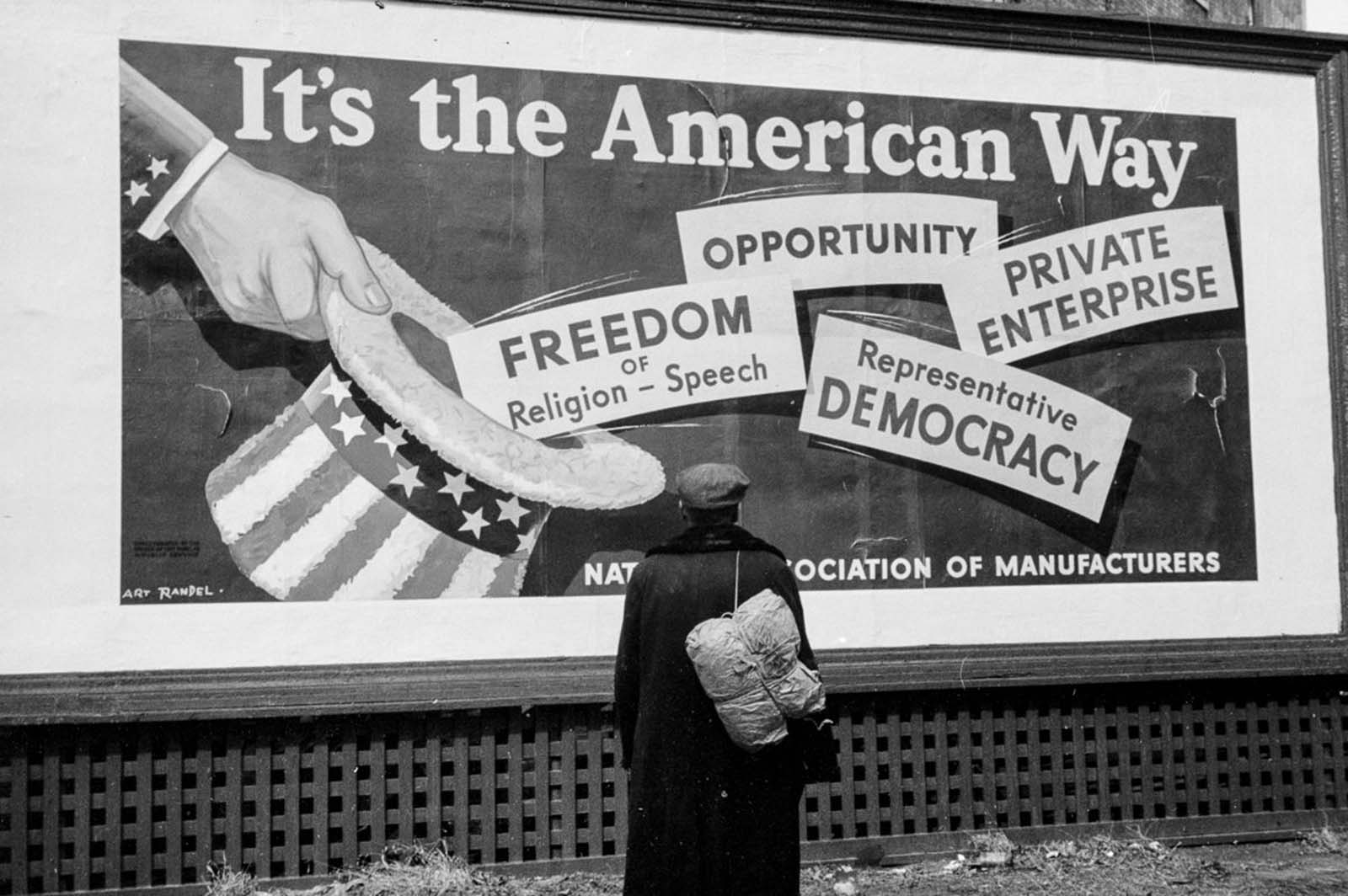
Dubuque, Iowa. 1940.

A man scavenges in the Dubuque city dump.

“I’m glad I’m an American”. Dubuque, Iowa.
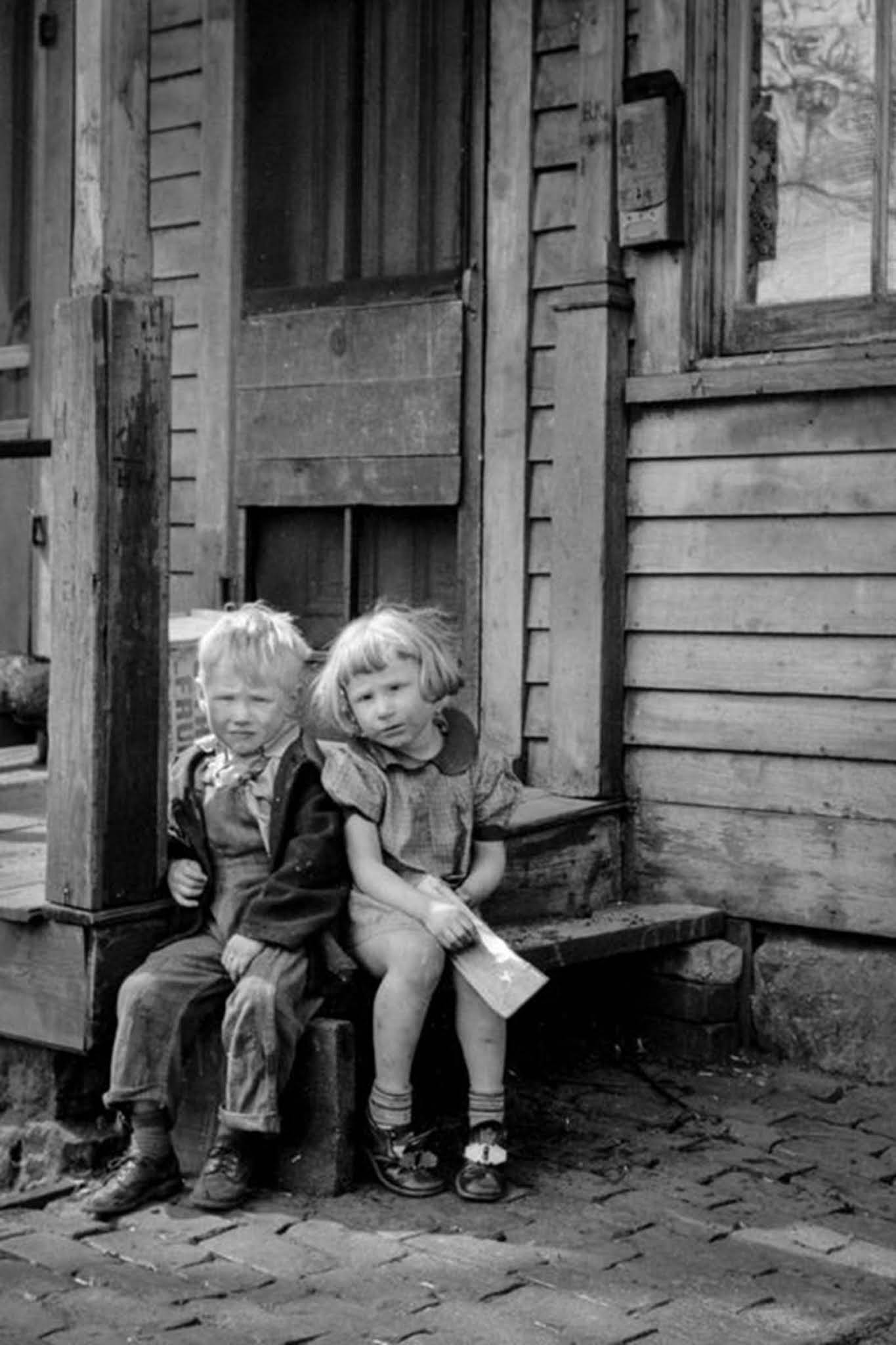
Children living in the river bottoms shacktown in Dubuque. 1940.
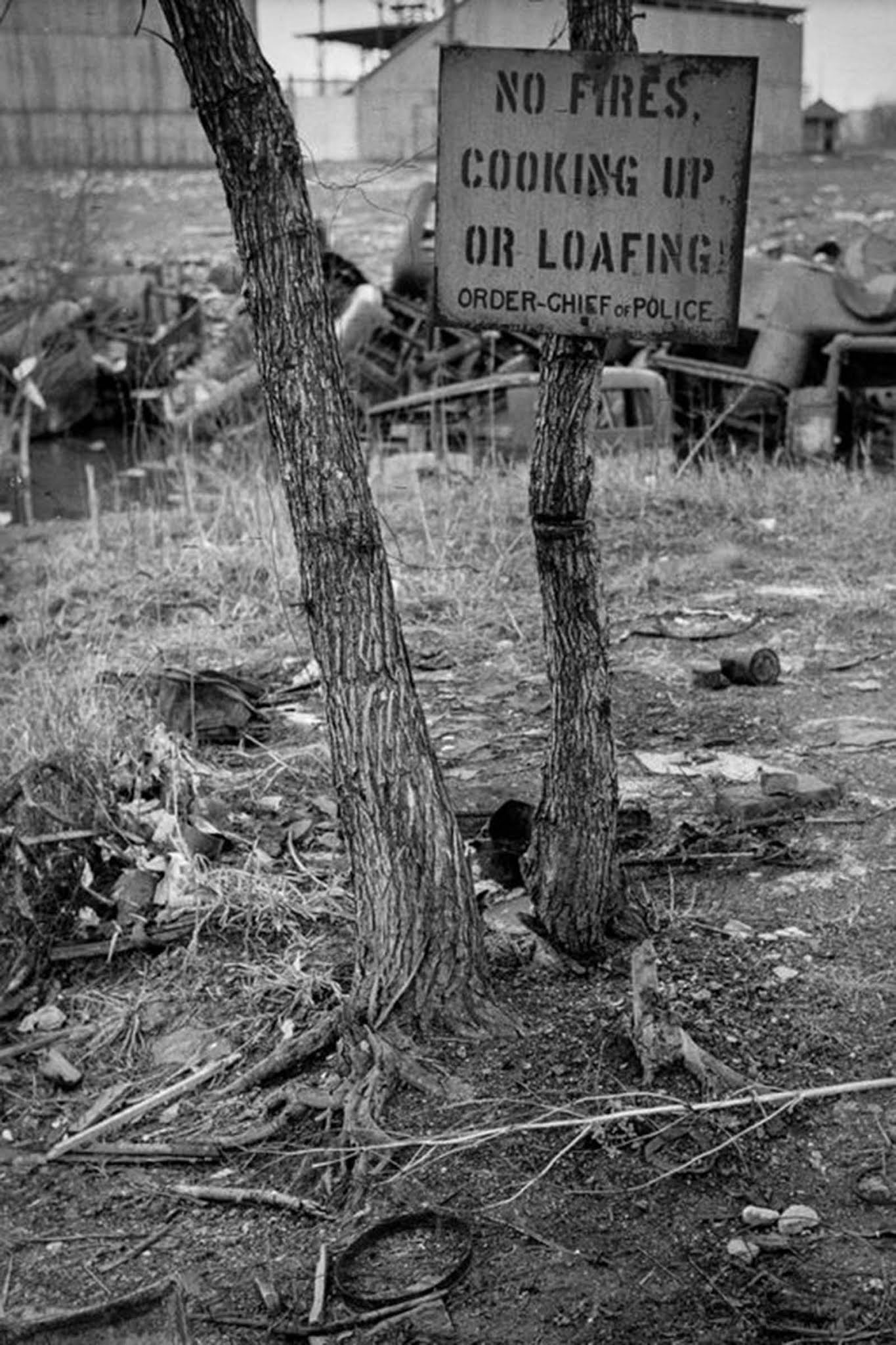
A sign in the river bottoms shacktown in Dubuque. 1940.

A resident of the river bottoms shacktown in Dubuque, Iowa. 1940.
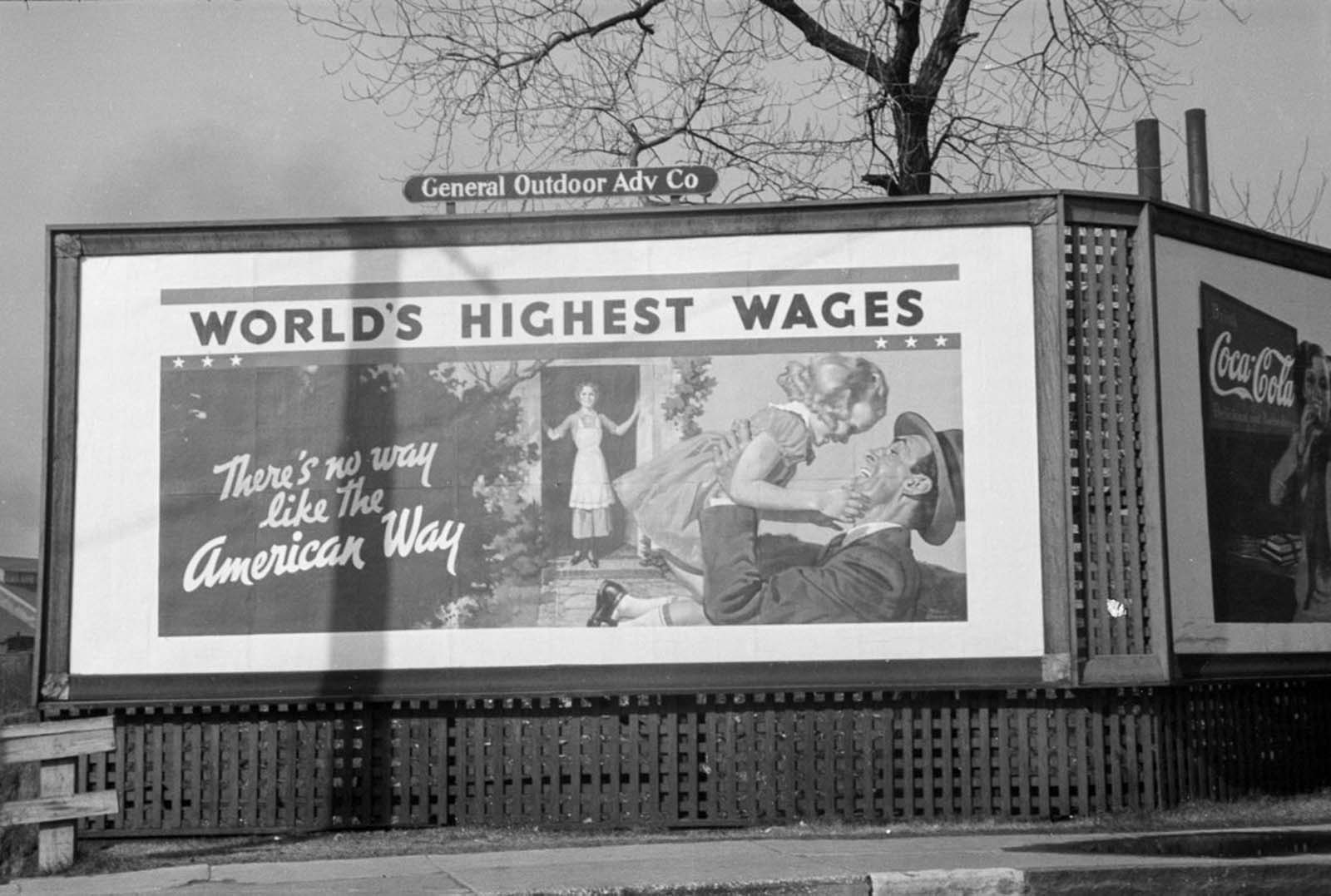
Memphis, Tennessee during the Great Ohio River Flood. 1937.
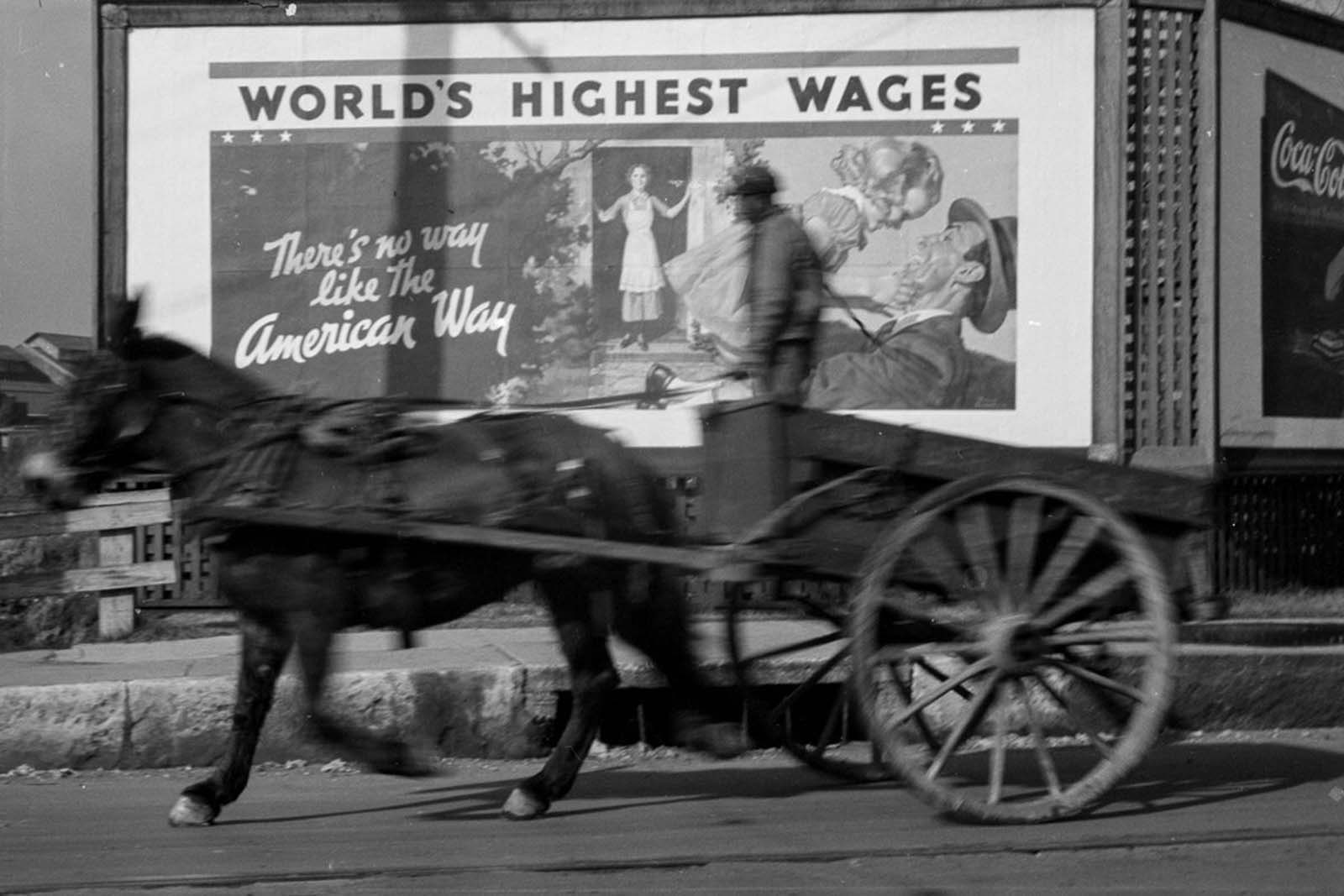
“World’s Highest Wages”. 1937.
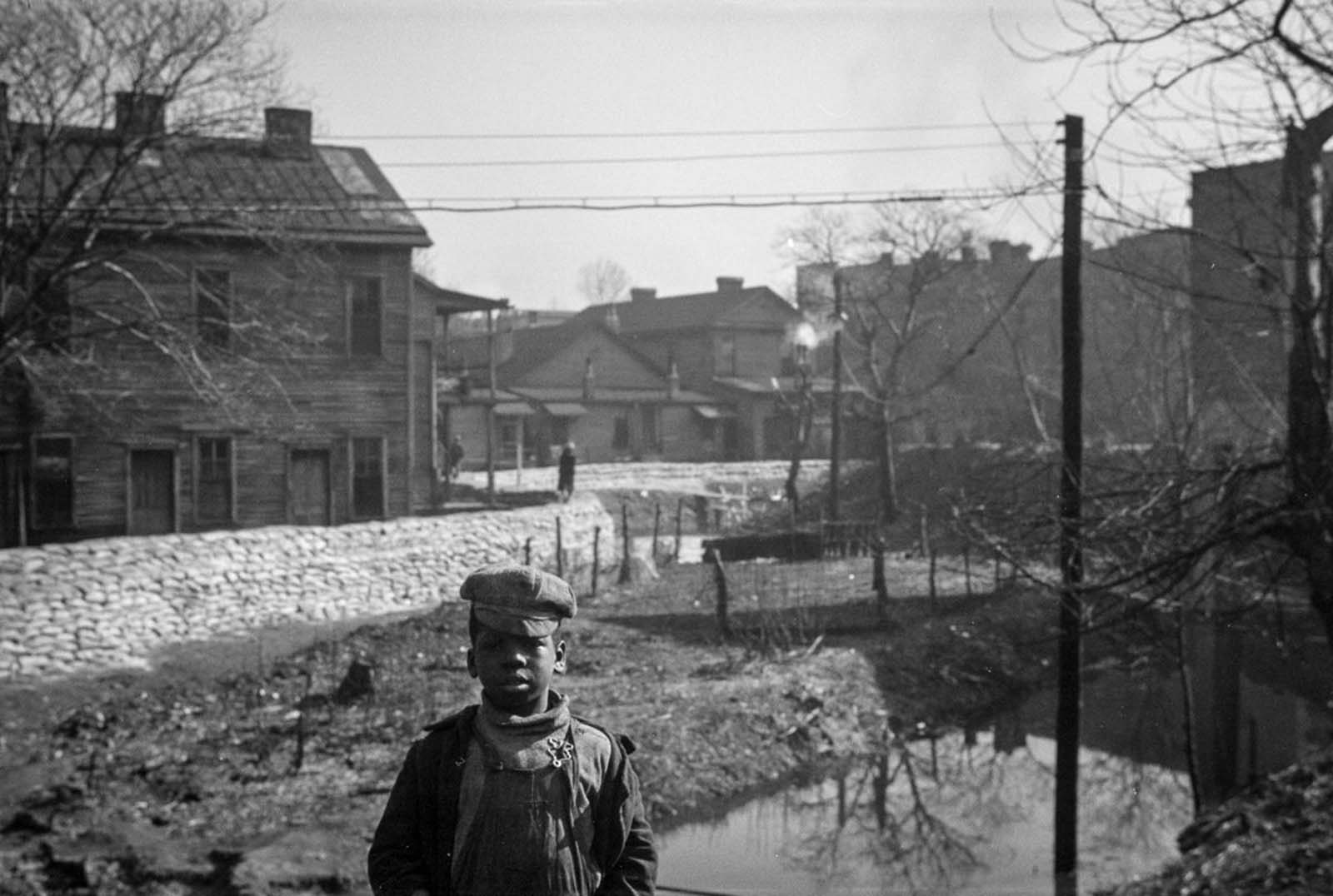
Memphis, Tennessee during the flood. 1937.
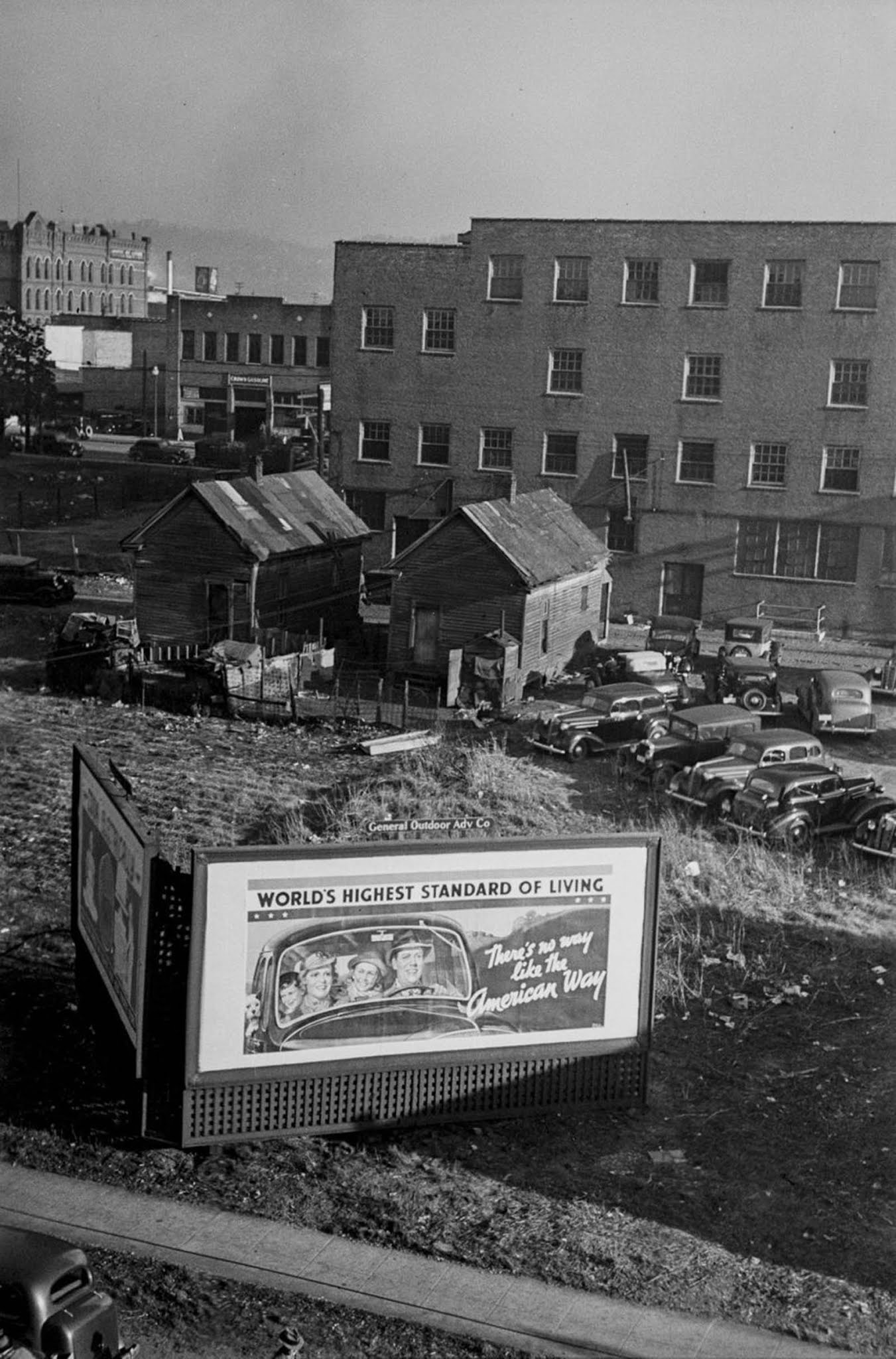
“World’s Highest Standard of Living”. Birmingham, Alabama. 1937.

A migrant encampment in Birmingham, Alabama. 1937.
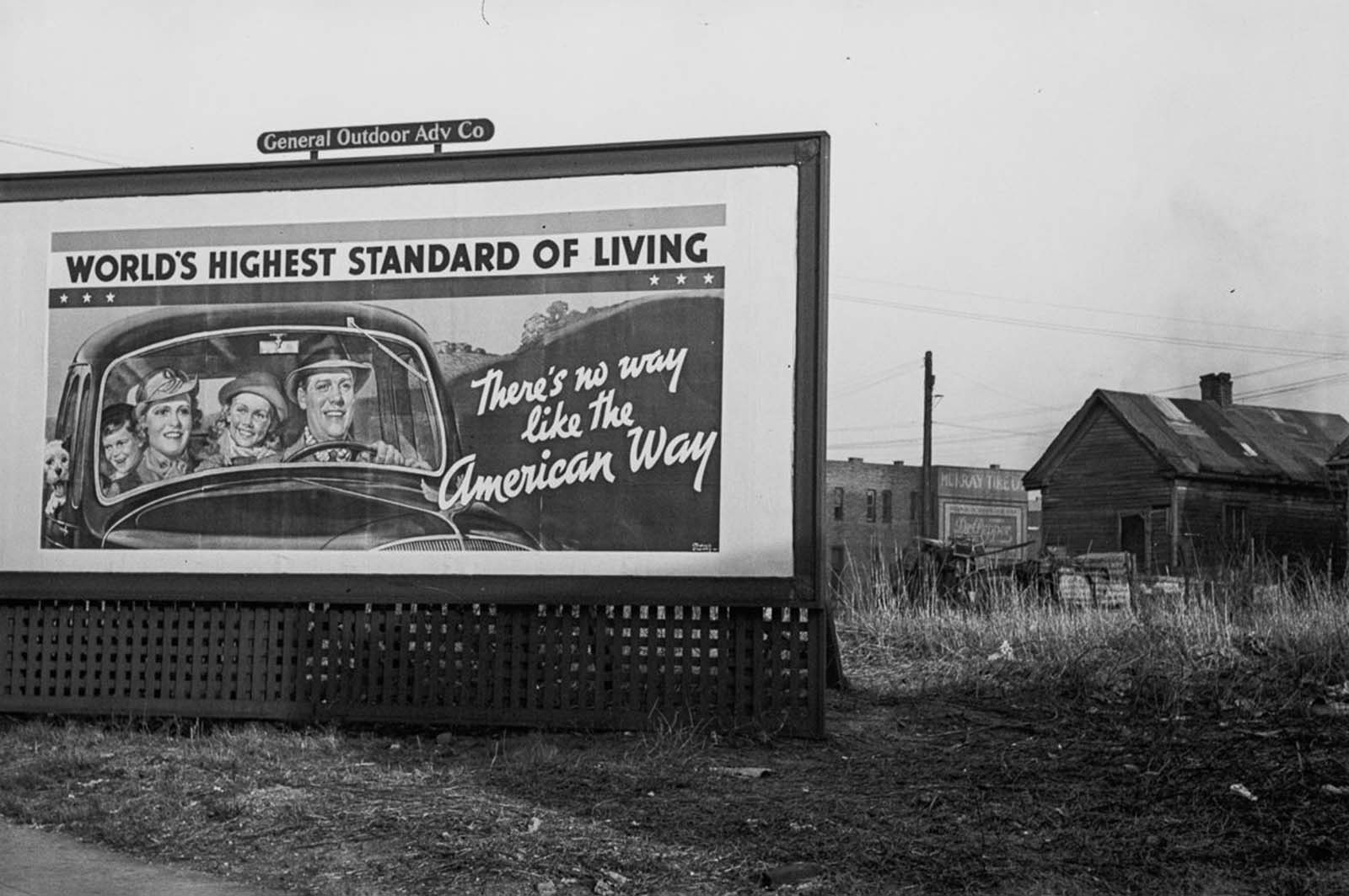
“World’s Highest Standard of Living”. Birmingham, Alabama. 1937.
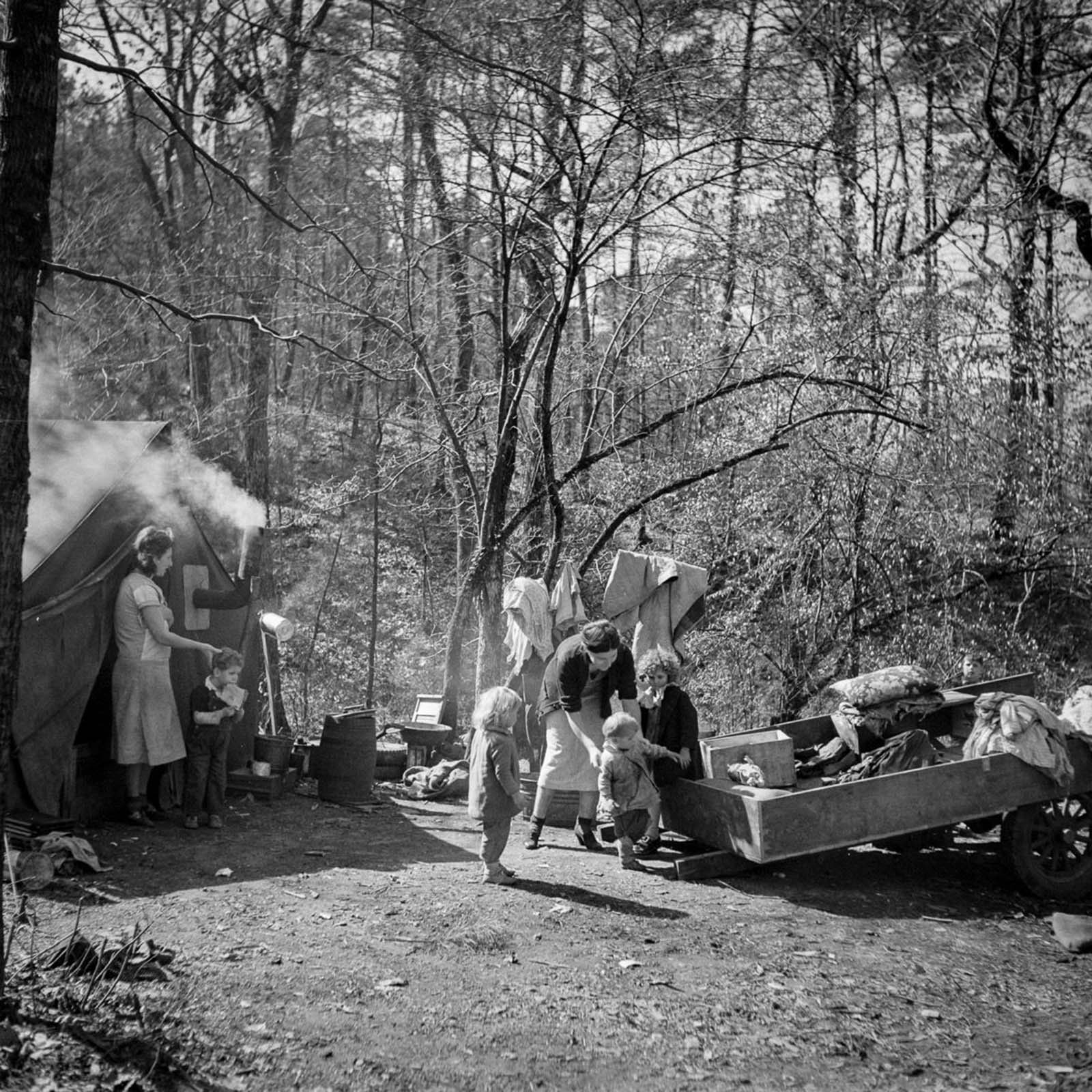
A migrant encampment in Birmingham, Alabama. 1937.
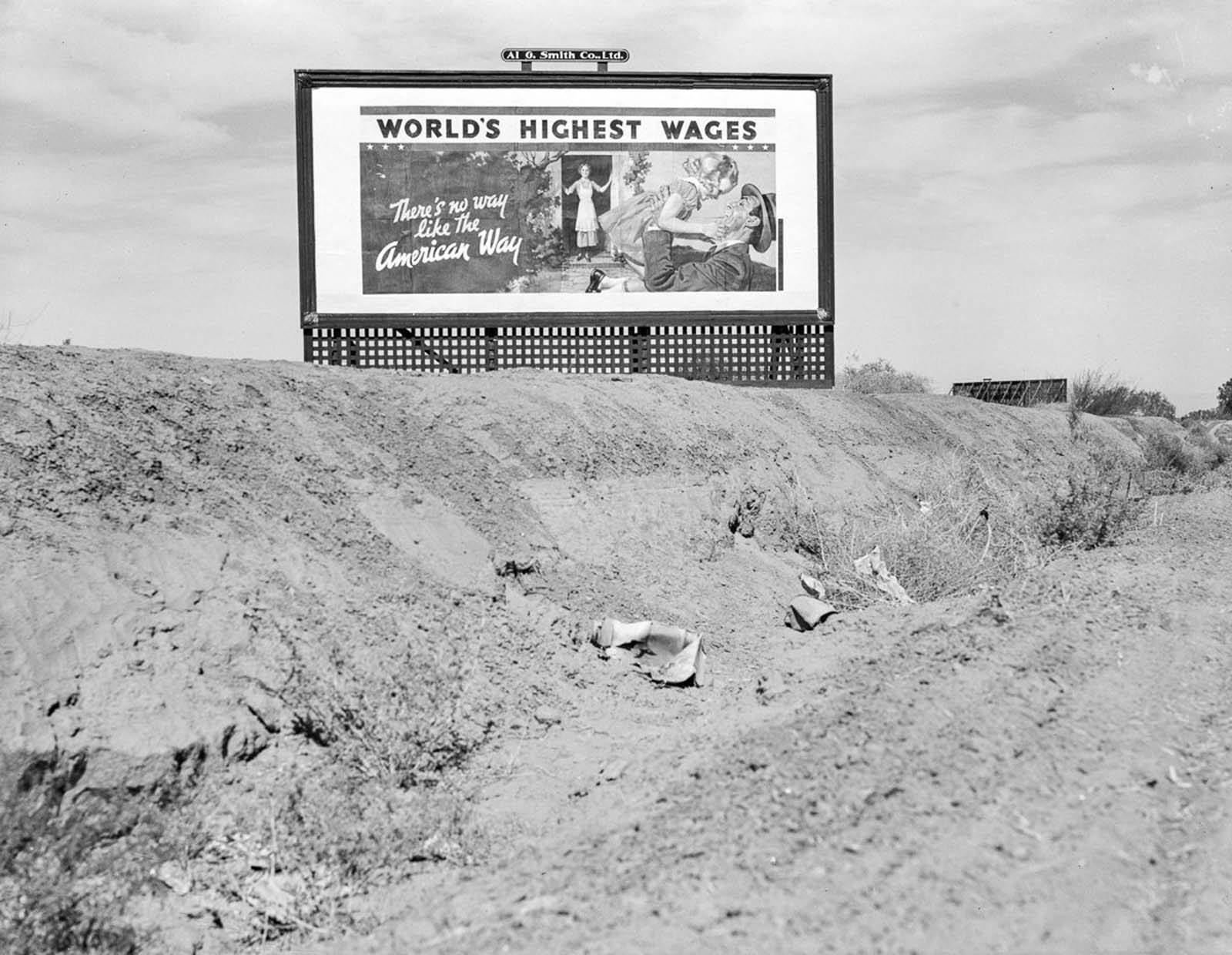
Highway 99 in California. 1937.
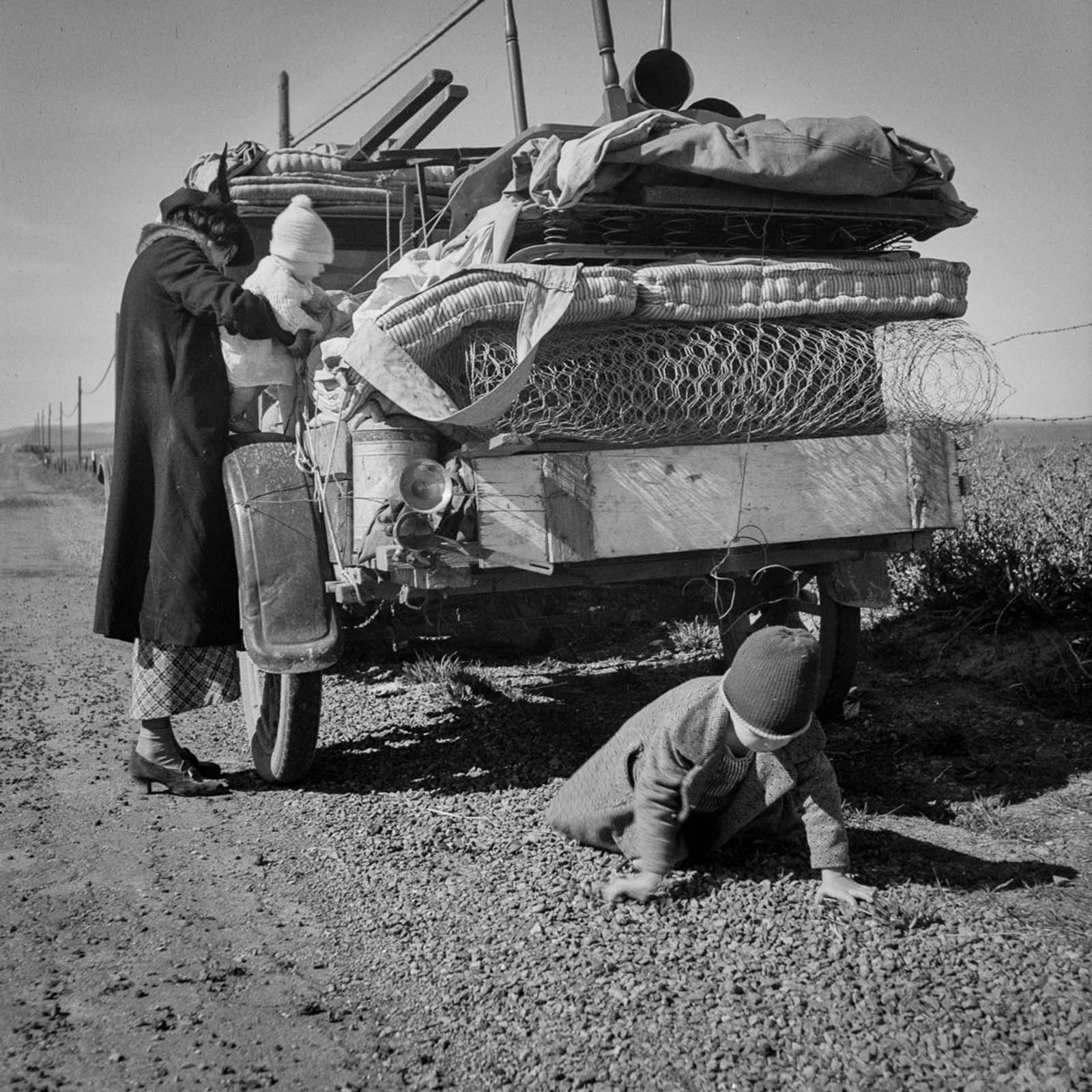
A Missouri family of five fleeing drought on Highway 99 in California. 1937.
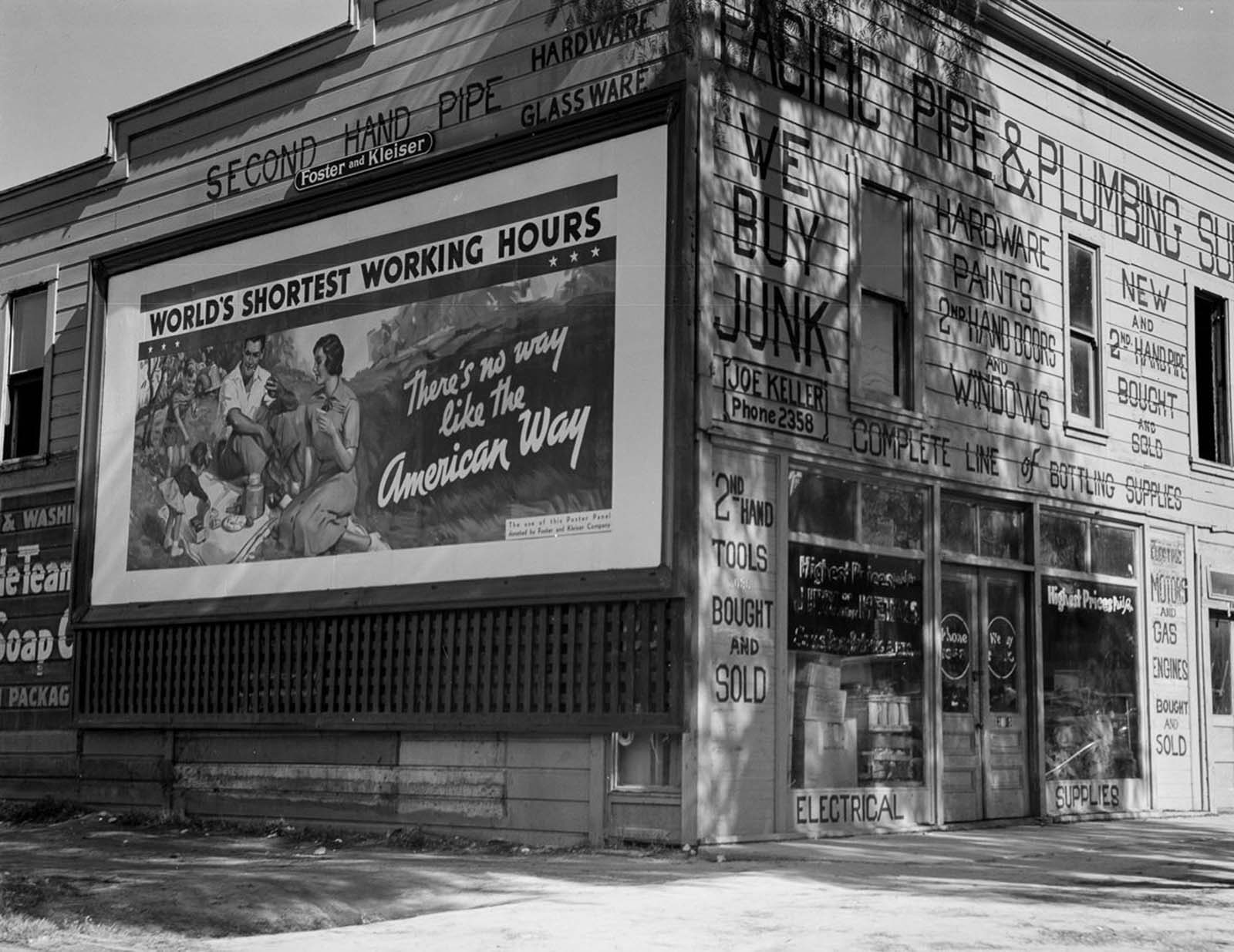
“World’s Shortest Working Hours”. Highway 99 in California. 1937.
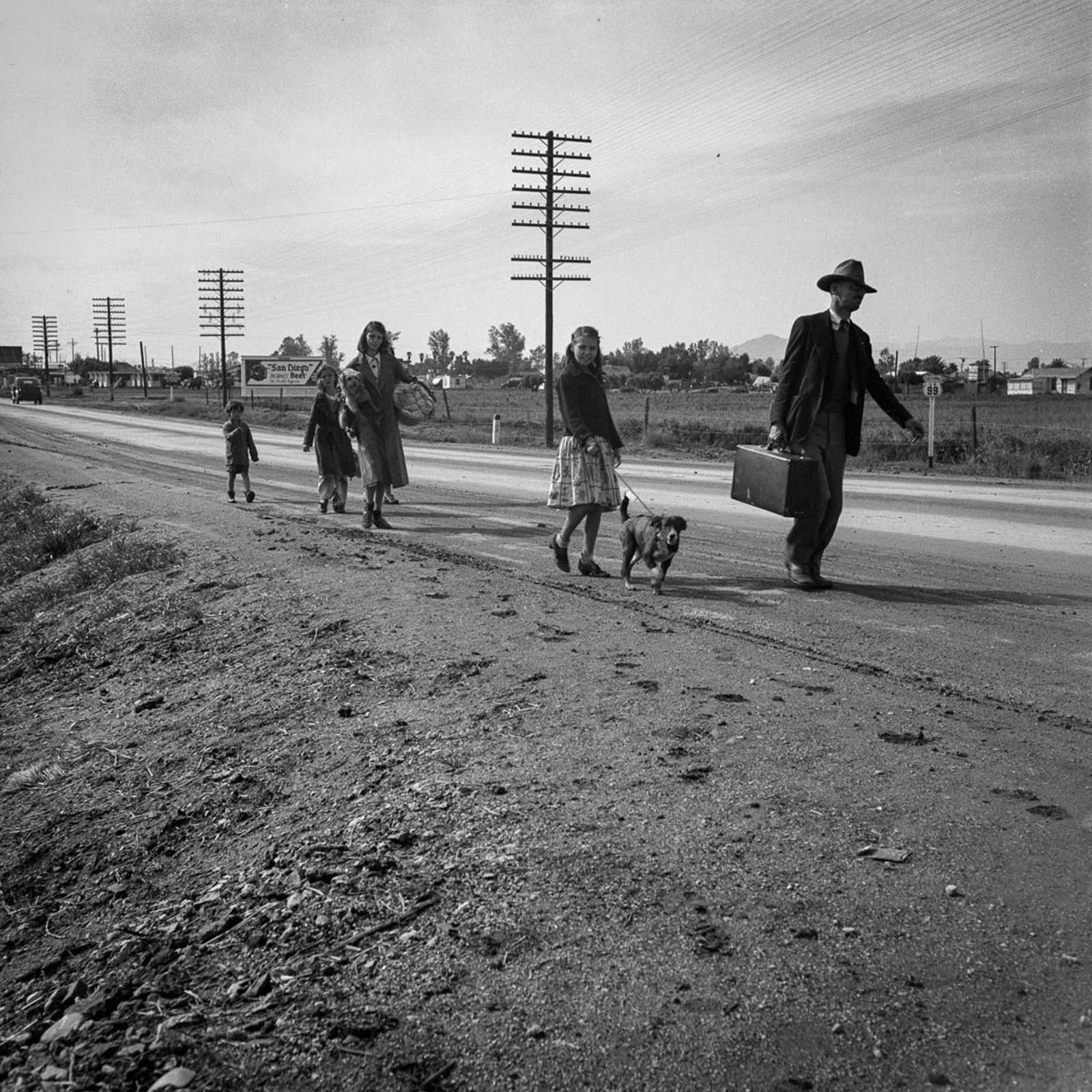
A homeless cotton-picking family of seven walk on Highway 99 from Phoenix, Arizona to San Diego in search of relief. 1939.

“World’s Highest Standard of Living”. Highway 99 in California. 1937.
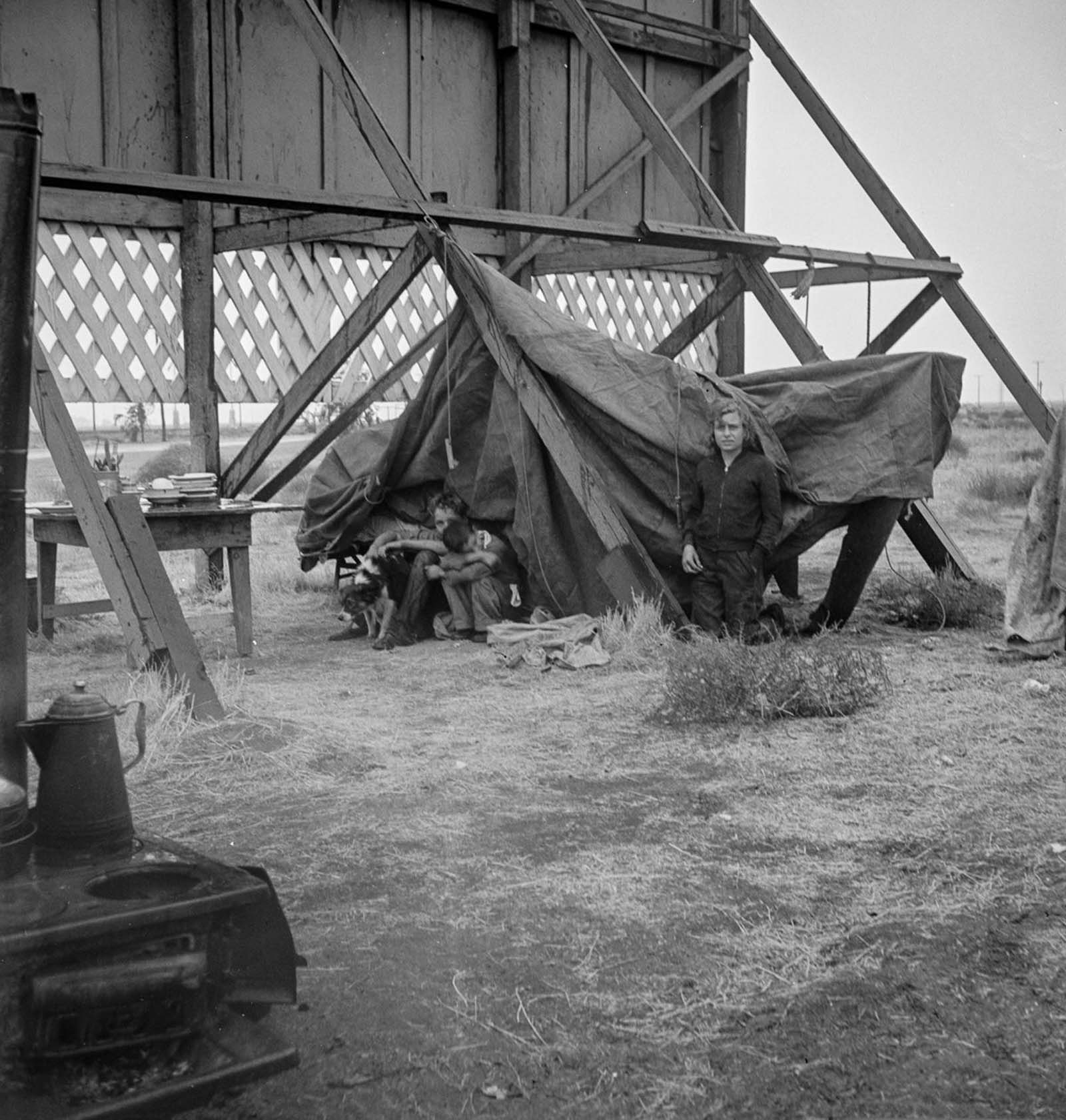
A family camps out behind a billboard on Highway 99 in Kern County, California. 1938.

Toward Los Angeles, California, 1937.
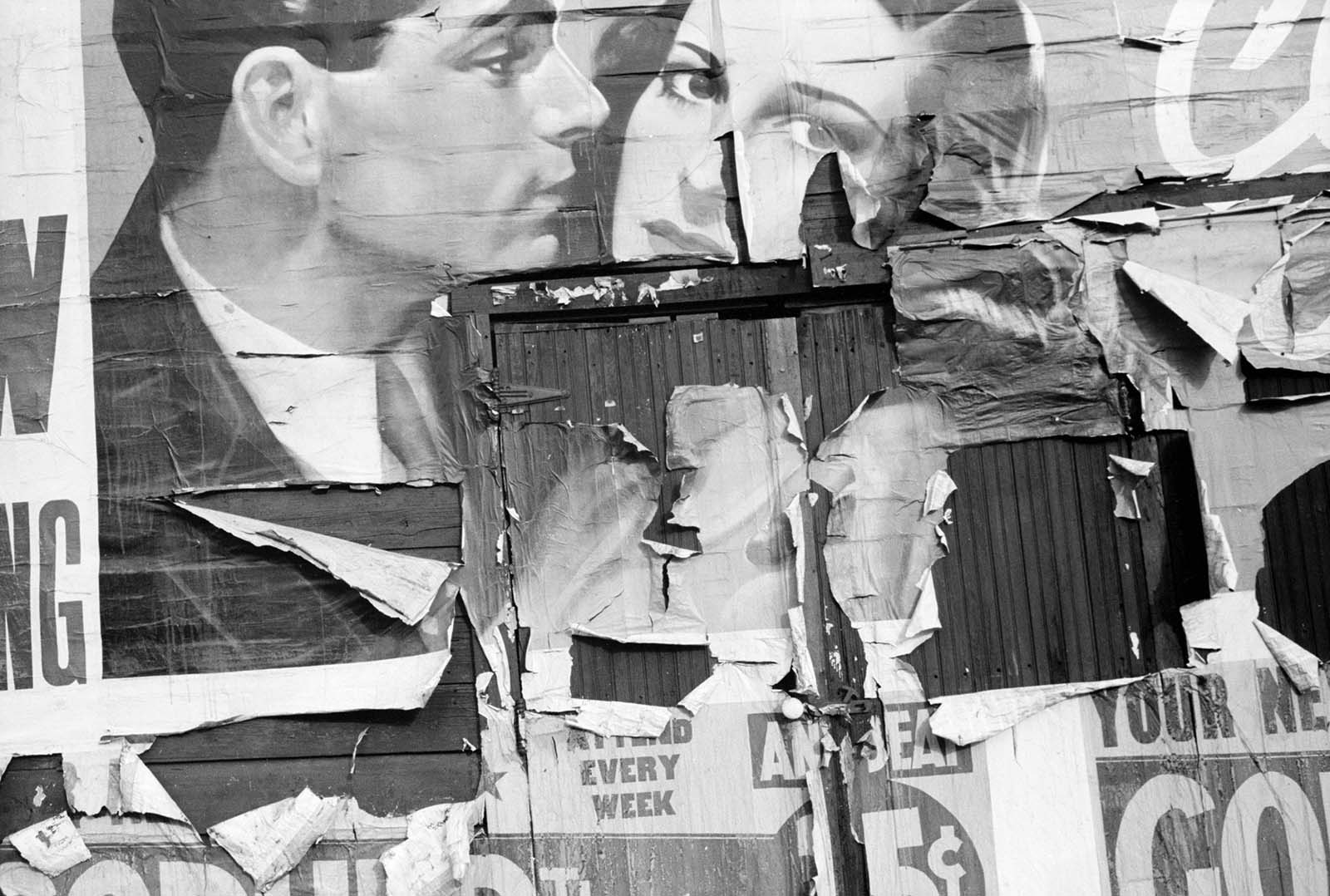
Tattered billboard, Minneapolis, Minnesota. 1939.
(Photo credit: Library of Congress / Margaret Bourke-White / Dorothea Lange / John Vachon/ Arthur Rothstein / Edwin Locke / Inventing the “American Way”: The Politics of Consensus from the New Deal to the Civil Rights Movement).



